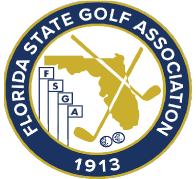Ken Macdonald, M.S., CGFI-3, CES, PES
LIFETIME PERFORMANCE
www.lifetimeperformancepbg.com
In Part I of this article I described the importance of ensuring a child’s physical development through physical activity. More importantly, taking advantage of the child’s “sensitive period” by introducing various sports specific and developmental specific stimuli. Cultivating the athlete within each child first is critical to the process of Long Term Athletic Development ; a term described in further detail in Part 1. If the child does not engage in sports or physical activities during these periods, the result will be a permanent loss of fitness and athletic potential. In other words, develop the athlete before the golfer. Part II of this article will describe, in further detail, each stage of development and the training recommendations associated with it.
Stage 1 – FUNdamentals (Males 6-9; Females 6-8)
It is during this stage of development that children should learn and master Fundamental Movement Skills (FMS). The foundation for future athletic prowess is established during these years. The focus should be on building basic motor skills like running, jumping, skipping, throwing, kicking, balance, coordination, speed, and agility. These are all skills that should naturally develop through play. Unfortunately, in an age where technology is so advanced, it is more appealing now for a child to sit around and play video games and watch TV instead of going outside to climb trees, play on jungle gyms, and throw and kick balls.
At this stage participation in as many different sports (3-4 is ideal) as possible is of key importance. Speed, power and endurance are developed through the design of FUN games that are competitive and keep the kids interested. Proper techniques on throwing, running, and kicking can be taught to ensure correct form is cultivated and carried over to the next stage of development. It is during this time that the first “window of opportunity for accelerated adaptation” occurs for speed development in boys and girls. Exercise programs should focus on challenging the child to run as hard as he/she can, change direction as quickly as possible and as related to golf, swing a lightly weighted instrument with speed and velocity. Acquiring the basic motor skills during this stage will have a strong carryover to the development of their Fundamental Sports Skills (FSS) during the next stage.
Stage 2 – Learning to Train (Males 9-12; Females 8-11)
This is arguably the most important and pivotal stage to the development of the young golfer. It is during this time that children are physiologically ready to obtain the general overall sport skills required for athletic development. In the prepubescent athlete, all athletic qualities correlate highly with one another .This means that gains in one physical attribute - speed for instance- will also result in gains in flexibility, endurance and coordination. The “window of opportunity” stressed here is motor learning and coordination. This is when our young golfer will begin to learn the grip, backswing, follow-thru, weight shift, and set up. All of this is achieved by creating fun and challenging games for the child as this is still the optimal learning environment. Stretching and body weight exercises are also introduced in conjunction with the FMS learned in the previous stage.
Stage 3 – Training to Train (Males 12-16; Females 11-15)
This training phase is usually categorized by the onset of Peak Height Velocity or the major growth spurt. This is the ideal time for strength and aerobic training since the hormonal changes occurring in the adolescent body promote an improved ability of the body to repair itself, increase strength, increase muscle mass, and increase endurance. The introduction of strength and aerobic training with emphasis on body weight training and cardiovascular conditioning will not replace the skill, speed, and flexibility training that preceded it. In fact, it is equally important for golfers to maintain flexibility levels during growth spurts since the bones and ligaments tend to outgrow the muscles creating tightness throughout. Junior golfers spend too much time competing at this age and not taking advantage of the “window of opportunity” for developing the two “sensitive” periods of development. Missing this critical time will negatively influence their athletic development and could cause a plateau during the latter stages of their careers.
Stage 4 – Training to Compete (Males 16-18; Females 15-17)
By this time, athletes should have optimized their physical preparation by competing in numerous sports, practicing technical skills, and improving their fitness levels. It is now time to become more sport specific in practice and competition. Devoting time to one sport more than others is accepted and the practice to competition ratio should be approximately 50/50. Fitness training now becomes more specific to the sport and individually tailored to the golfers physical restriction and limitations.
Stage 5 – Training to Win (Males 18 and Older; Females 17 and Older)
The final phase of athletic preparation should focus on maximizing performance in all facets. The golfer should be devoting attention to all physical modes of improvement by training to peak for the major competitions and events. As golfers tend to play year round at this stage of development, creating periodization programs may not be as realistic as it would with a football player who has a set established season. Because of this, training activities will be reduced putting a special emphasis on maintenance of physical qualities while competing more frequently. The golfer should be training but with less volume and focusing on maintaining flexibility, strength and power levels without creating soreness that may impact performance in a negative way.
It is critical during the pre-pubescent years that parents support their children without pressuring them or forcing them into early specialization and without exposing them to a variety of sport and athletic activities. All too often I get a junior client whom I quickly discover is void of fundamental motor skills like throwing, kicking, jumping, or catching. Because of this constant attention to one sport, the child lacks the necessary athletic skills needed for long term success. Even worse, that same child will often show signs of burnout from golf.





